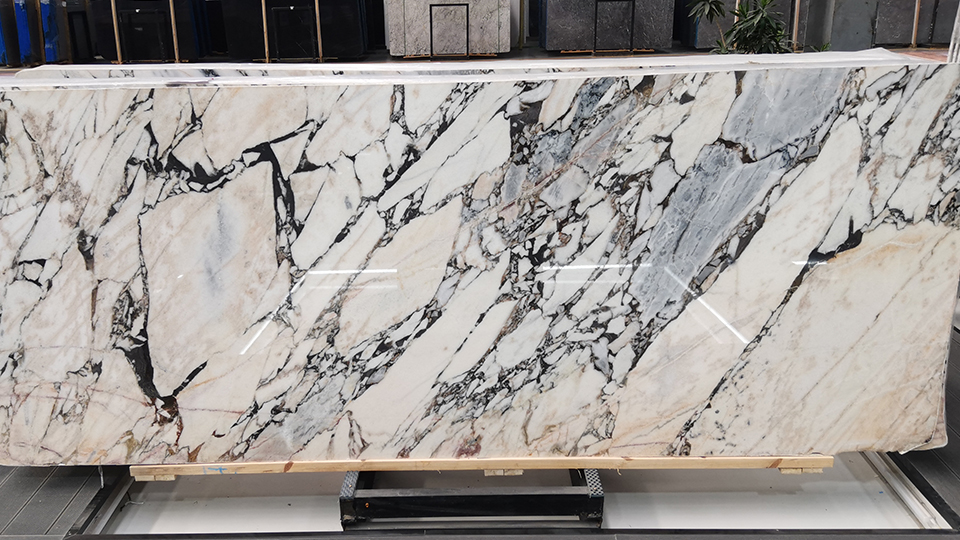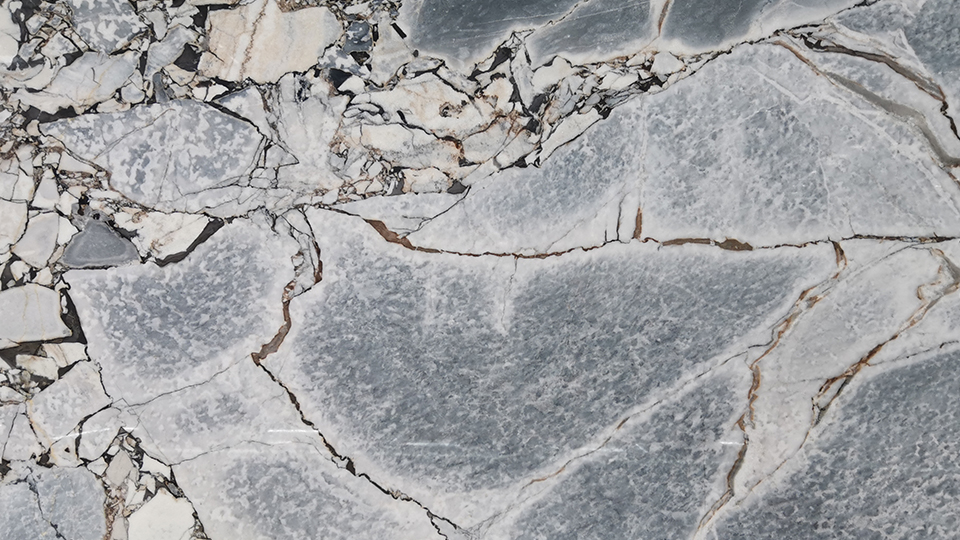

How to Cut Granite Tops: A Comprehensive Technical Guide
Granite countertops are a premium choice for kitchens and bathrooms, prized for their unparalleled durability, natural beauty, and timeless appeal. While a skilled fabricator often handles the complex process of cutting and installing granite, there are instances where homeowners or experienced DIY enthusiasts might need to make precise cuts for sink cutouts, cooktop openings, custom shapes, or for fitting an existing slab into a unique space. Cutting granite is not a task for the faint of heart; it requires specialized tools, meticulous preparation, and a deep understanding of the material's properties to achieve clean, safe, and professional results.
This comprehensive technical guide will delve into the intricacies of cutting granite tops, covering everything from understanding the material and selecting the right tools to step-by-step procedures, essential safety precautions, and common pitfalls to avoid.
I. Understanding Granite: The Material You're Cutting
Before making the first cut, it's crucial to understand what granite is and why it demands specific cutting techniques.
A. Composition and Properties:
Granite is an intrusive igneous rock formed from the slow cooling of magma deep within the Earth's crust. This process results in a coarse-grained (phaneritic) texture with interlocking mineral crystals. Its primary mineral constituents are:
Quartz: (20-60%) – Very hard (Mohs 7), contributing to granite's scratch resistance.
Feldspar: (65%+ of total feldspars) – Hard (Mohs 6-6.5), responsible for much of granite's color.
Mica and Amphibole: (5-15%) – Softer minerals (Mohs 2-6), appearing as dark flecks.

The high concentration of hard minerals like quartz and feldspar is why granite is so durable, but also why it's incredibly difficult to cut without specialized tools. It's tough, but also brittle; improper cutting can lead to chipping, cracking, or even breaking the slab.
B. Key Considerations for Cutting:
Hardness: Requires diamond-impregnated blades. Diamonds are the hardest known material, capable of abrading the hard minerals in granite.
Brittleness: Demands slow, steady pressure and consistent cooling to prevent thermal shock and structural fractures. Vibration must be minimized.
Dust: Cutting granite generates a significant amount of fine silica dust, which is a severe respiratory hazard (leading to silicosis). Wet cutting is essential to suppress dust.
Weight: Granite slabs are extremely heavy. A typical 3cm (1.25 inch) thick granite slab weighs approximately 18-20 pounds per square foot. Handling requires multiple people, specialized lifting equipment, and extreme caution.
II. Essential Tools and Materials
Attempting to cut granite without the proper tools is not only ineffective but incredibly dangerous.
A. Cutting Tools:
Wet Saw (Bridge Saw or Rail Saw):
Purpose: The preferred tool for long, straight, or precisely angled cuts. A bridge saw is a large, stationary machine for shop use, while a rail saw (or track saw specifically designed for stone) is a portable option ideal for on-site cuts.
Mechanism: Uses a diamond blade that is continuously lubricated with water to cool the blade and suppress dust.
Advantages: Provides the cleanest, straightest cuts with minimal chipping. Best for long edges.
Disadvantages: Less maneuverable for curves or tight corners than an angle grinder.
Angle Grinder with Diamond Blade:
Purpose: Essential for curved cuts (e.g., sink cutouts), internal corners, small adjustments, or initial plunge cuts for larger openings.
Blade Types:
Continuous Rim Diamond Blades: Best for smooth, chip-free cuts on hard materials like granite, especially when wet.
Segmented or Turbo Rim Blades: Faster cutting but can cause more chipping. Less ideal for visible cuts.
Important Note: Must be used with a wet cutting attachment or constant water flow. Dry cutting with an angle grinder generates excessive heat, rapidly wears the blade, creates hazardous dust, and significantly increases the risk of cracking the granite.
Diamond Hole Saw/Core Bit:
Purpose: For cutting circular holes (e.g., faucet holes, small pipe cutouts).
Mechanism: A cylindrical diamond-coated bit that attaches to a drill, used with constant water lubrication.
B. Supporting Tools and Materials:
Work Surface: A stable, level, and well-supported workbench or sawhorse system. Ensure the granite is fully supported, especially around the cut line, to prevent sagging and cracking. Use sacrificial material (e.g., foam board, lumber) to protect your surface and the blade.
Clamps: Essential for securing the granite slab to the workbench and guiding rails.
Straight Edge/Guide Rail: For precise, straight cuts with a circular saw or angle grinder, a sturdy guide clamped to the slab is crucial.
Measuring Tape and Squares: For accurate marking.
Pencil/Marker: For drawing cut lines.
Water Source: A hose with a sprayer, pump sprayer, or a dedicated water system for wet cutting.
Caulking Gun and Silicone Sealant: For finishing cut edges if joining pieces.

Respirator (N95 or better) and Eye/Ear Protection: Absolutely non-negotiable for dust protection and safety.
Gloves: For grip and protection from sharp edges.
Wet/Dry Vacuum: For cleanup.
Drop Cloths/Plastic Sheeting: To protect surrounding areas from water and dust.
III. Pre-Cutting Preparation: The Foundation of Success
Thorough preparation is paramount for a safe and successful granite cutting project.
A. Safety First:
Personal Protective Equipment (PPE): Don a high-quality N95 (or higher) respirator, safety glasses/goggles, hearing protection, and sturdy gloves.
Work Area: Choose a well-ventilated outdoor area or a designated workshop with excellent ventilation. Cover floors and adjacent surfaces with plastic sheeting to contain water and slurry.
Electrical Safety: Ensure all electrical tools are properly grounded and used with GFCI (Ground Fault Circuit Interrupter) protection, especially when wet cutting. Keep electrical cords clear of water and cutting path.
Team Lift: Never attempt to lift or move large granite slabs alone. Always use appropriate lifting techniques with sufficient help (typically 2-4 people depending on slab size).
Support: Ensure the granite slab is fully and evenly supported on your work surface, especially directly under the cut line. Undersupported areas will crack.
B. Accurate Measurement and Marking:
Double-Check Measurements: Measure at least twice, from multiple points. Remember the adage: "Measure twice, cut once."
Template Use: For complex shapes like sink cutouts, create a precise template from cardboard or thin plywood. This allows for fine-tuning before marking the actual stone.
Drawing the Cut Line: Use a pencil or fine-tip marker to draw a clear, precise cut line on the granite. Use a straight edge for straight lines and a flexible curve or template for radii.
Kerf Allowance: Remember to account for the thickness of your diamond blade (the kerf). If you're cutting precisely to a line, the blade will remove material along that line. For internal cuts, cut just inside the line. For external cuts, cut just outside.
IV. Step-by-Step Cutting Procedures
The method you use depends on the type of cut required.
A. Cutting Straight Lines (Wet Saw/Rail Saw):
Set Up Saw: Place your wet saw or guide rail according to your marked line. Clamp the rail securely to the granite slab.
Water Supply: Ensure a continuous and ample water supply is directed to the blade.
Blade Depth: Set the blade depth to cut entirely through the granite plus a small amount into the sacrificial material below.
First Pass (Score Cut): For highly visible edges, make a shallow "score cut" (1/8 to 1/4 inch deep) along the entire line. This helps prevent chipping on the visible surface.
Full Depth Cut: For subsequent passes, or for less critical cuts, make full depth cuts.
Slow and Steady: Push the saw through the granite slowly and steadily. Do not force the blade. Let the diamond do the work. Excessive pressure can cause chipping, overheating, or blade deflection.
Maintain Water Flow: Ensure continuous water flow throughout the cut.
Support Offcut: As the blade nears the end of a long cut, ensure the offcut piece is supported to prevent it from breaking prematurely and binding the blade or causing an uncontrolled fracture.
B. Cutting Curves/Internal Cutouts (Angle Grinder with Wet Attachment):
Mark Clearly: Draw the curve or internal cutout precisely.
Pilot Holes (for tight curves): For very tight curves or inside corners, use a diamond core bit to drill pilot holes at the corners or at critical points on the curve. This helps prevent over-cutting past the marked line.
Plunge Cuts/Relief Cuts: For internal rectangular cutouts (e.g., cooktop), make several relief cuts from the interior towards the corners, stopping short of the main cut line. This reduces stress.
Wet Cutting Set-up: Attach your wet cutting shroud and connect it to a water source, or have a constant stream of water directed onto the blade by an assistant.
Slow and Steady Grinding: With the grinder running at full speed and water flowing, slowly plunge the blade into the granite along your marked line. For curves, make multiple shallow passes rather than one deep pass. Keep the grinder moving smoothly.
Perimeter Cutting: Work your way around the entire perimeter of the cutout. For internal cuts, ensure you stop just short of the corner if you've pre-drilled pilot holes.
Clean Up: Once the main cut is done, you may need to use smaller grind bits or sandpaper to refine the edges.
C. Cutting Holes (Diamond Core Bit):
Mark Center: Precisely mark the center of the desired hole.
Water Reservoir: Create a small dam around the marked center with plumber's putty or similar material to create a water reservoir for cooling. Keep it filled with water.
Drill Setup: Attach the diamond core bit to a powerful drill (corded is usually preferred).
Controlled Pressure: Start drilling slowly at an angle to create a groove, then straighten the drill. Apply firm, but not excessive, pressure.
Constant Water: Maintain constant water within the dam. This is critical for cooling the bit and flushing out debris.
Clear Debris: Periodically lift the bit to allow water to flush out the granite slurry.
Complete Cut: Continue drilling until the core separates.
V. Post-Cutting Finishing (Optional but Recommended)
Once the cut is made, the edges may need finishing.
Chamfer/Bevel: Use a diamond hand pad (coarse grit first, then finer grits) or a small angle grinder with a polishing pad to slightly chamfer or bevel the sharp edge. This reduces chipping during handling and installation and makes the edge less prone to future chipping.
Polishing: For exposed edges, use a series of progressively finer grit diamond polishing pads (e.g., 50, 100, 200, 400, 800, 1500, 3000 grit) to achieve the desired polish. This is a wet process.
VI. Common Mistakes and How to Avoid Them
Dry Cutting: The most dangerous and damaging mistake. Causes excessive dust, blade overheating, rapid blade wear, and high risk of cracking the granite. Always wet cut.
Forcing the Blade: Applying too much pressure strains the machine, overheats the blade, and causes chipping or blade binding. Let the diamonds do the work.
Inadequate Support: Undersupported granite will crack, especially during cutting. Ensure full, even support.
No PPE: Silicosis is a serious, irreversible lung disease. Dust protection is non-negotiable.
Ignoring Utilities: Cutting into power lines or gas lines can be fatal. Always check for utilities.
Lack of Templates/Measurements: Errors in marking lead to irreversible mistakes.
Over-cutting Corners: When cutting internal corners, stopping short and then refining with a small bit or hand grinder prevents unsightly over-cuts.
Conclusion
Cutting granite countertops is a demanding but achievable task for those with the right tools, knowledge, and meticulous attention to detail. It requires a firm understanding of granite's hard yet brittle nature, emphasizing the critical importance of wet cutting, precise measurement, and steady, controlled execution. While the process is challenging, adhering strictly to safety protocols and mastering the techniques outlined in this guide will enable you to achieve professional-grade results, saving significant costs and adding a personal touch to your granite installation or modification. Remember, patience and preparation are your most valuable tools when working with this magnificent natural stone.
Name: selena
Mobile:8613176910558
Tel:86-13176910558
Whatsapp:8619323167067
Email:409284553@qq.com
Add:Laizhou ,Shandong , Shandong Province, China